


Marching to the beat of digital transformation




Marching to the beat of digital transformation





f you’ve ever lived in the UK, you’re probably familiar with the variety of cinematic British Army (BA) adverts that grace television screens. Whether honouring the fallen, conducting recruitment drives, or highlighting the coalescence of soldiers and emerging digital capabilities, each advert is nothing short of inspirational, suggesting a sense of close-knit community and belonging.
These adverts have become a type of national institution for Brits, a source of pride. And now, they are starting to detail the future of the British Army as well as the evolutionary steps needed to meet this future, including the BA’s digitalisation journey.
Last time we spoke with Brigadier Stefan Crossfield – Head of Information Exploitation, Chief Data Officer, and Deputy CIO for The British Army – he was outlining the onset of Project THEIA, the BA’s digital transformation programme that began in 2021.
A year on, significant progress has been achieved. So, we caught up once more with Brig. Crossfield to discover more about where the project is taking The British Army next.

Brig. Stefan Crossfield & Major General Collyer share the British Army’s digital transformation progress so far, the challenges encountered and next phases

Back at the tailend of 2020, The Ministry of Defence (MoD) announced the Army’s intention to ‘double-down’ on embracing new technologies and enhancing operational facilities via a digitalisation programme called Project THEIA (pronounced thay-a).
According to the MoD, the aim of the project is “driving digital transformation in the British Army to outcompete adversaries, integrate with partners, and operate with maximum efficiency”. By 2023, the programme will have been in operation for two years and moved forward significantly, altering the fundamental structure and cohesiveness of the BA.

“Project THEIA is an accountancy programme in the Army programme of record, which means it's not got a lot of funding. That's because it's a federated programme of change, which is providing the coherence mechanism across the whole army to deliver digital transformation,” outlines Crossfield.


“The intent is to take us from being a predominantly industrial-age organisation – which is what we are now – to being an information-age-ready army, which we'll need to be to compete against our adversaries, deliver our efficiencies in the future, and also partner better with industry, international partners and all other partners.
“It's built around a very small programme office, and its function is delivered through three principal aspects. Firstly, accelerators, which are programmes that we’re seeking to favour and drive hard so that we can learn lessons from them, scale them, and reuse them across the whole of the Army.”
The second aspect is the utilisation of an “enabler approach” – in other words, focusing on those things that enable digital transformation, like skills, operational changes and adoption of the cloud. The third aspect is catalysts, which comprises the technologies that the Army is looking to favour first.
So, in the time that’s elapsed since the programme’s onset, how far has it come?

“The programme is now entering that second epoch – or second phase, if you will – where it's beginning to focus on accelerators in particular, which are about delivering actual change in the hands of the users,” Crossfield says.
 Example of an image caption
Example of an image caption
BRIG. STEFAN CROSSFIELD HEAD OF INFORMATION EXPLOITATION, CDO, DEPUTY CIO, THE BRITISH ARMY
take us from being a predominantly industrial-age organisation –which is what we are now – to being an informationage-ready army”

Whether connecting military personnel with intelligence and real-time location, facilitating rapid development and deployment, or arming teams to protect the UK from advanced cyber threats, Elastic’s holistic search-powered platform accelerates the results that matter to the British Army’s digital transformation.

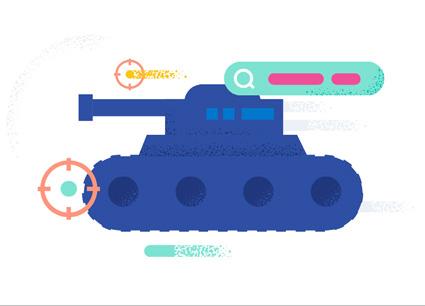
Learn more


After a long career in the UK Military, Robert Strange is now Senior Director of Solution Architecture at UKMEA Elastic – and he’s here to talk about search and security.
Robert Strange started his career as a tank commander in the Army and UK military. He left in 2007 after seven years of service at Tactical command, before moving as a civilian to strategic consultancy at Northward operational headquarters in the UK, before finally arriving at Elastic nearly six years ago to help build out the solutions architecture team.
At its core, Elastic is an advanced, distributed, RESTful search and analytics engine with many features and capabilities. “At the data core of Elastic is a search engine, this gives us enormous flexibility to ingest vast amounts of data while also presenting that in a way that’s relevant and valuable to our users,” says Robert Strange, Senior Director of Solution Architecture at UKMEA Elastic, “and it allows them to gain critical insights into their data, and consume the data in a way that is relevant to them, it’s about speed to value”.
Elastic’s strategy can be broadly broken down into three parts: the first is data consolidation; the second is data value; and the third is concerned with digital culture.
One of the main projects that Elastic are currently working on with the MOD is the provision of cyber protection to deployable headquarters. “It’s a complex problem in that it’s both a micro and a macro issue, both local and global” says Strange, “and it’s important to connect these HQs together across a security matrix.”
“One of the products that differentiates us is something called ‘Cross Cluster Search’, which allows us to take the query to the data - and not centralise the data to query centrally. Moving data around is expensive and problematic. So it allows higher headquarters to aggregate up threats over all Headquarters to provide that macro view over low bandwidth connections.’’





TITLE: HEAD OF INFORMATION EXPLOITATION, CHIEF DATA OFFICER, AND DEPUTY CHIEF INFORMATION OFFICER INDUSTRY: DEFENCE LOCATION: UK


Following attendance at Sandhurst Brig Stefan Crossfield was commissioned in to the REME in 1992. His initial assignment as a Lieutenant Colonel saw him working for Director Force Development ahead of the SDSR and then join the core Army 2020 team for 10 months.
Brig Crossfield took command of 6 Armoured Close Support Battalion REME in 2012 just before Op HERRICK 18. On his return he was selected for promotion to Colonel and temporarily acted as DCOS 3 (UK) Division.
Brig Crossfield has more recently delivered the narrative describing the military offer as COS to DPers and completed an Academic External Placement at Exeter University securing an MBA with Distinction in 2018. He served as DACOS YELLOWHAMMER in Jan 2019, completed a short tenure as DACOS Current Plans in HQ Home Command and upon promotion to Brigadier joined Army HQ as Head Information Exploitation (IX) in late 2020. As Hd IX, Brig Crossfield also fulfils the roles of CDO and Principal AI Officer for the British Army.
Brig Crossfield is a Chartered Engineer and a Fellow of the Institute of Mechanical Engineers. He is also a Chartered Manager and has a Masters Degree in Information Systems.



The rest of the digitalisation journey – which phase next?
THEIA was always designed to have three core phases. Each phase signals the next steps required to align with the overall aims and features different elements of the Army.



“The first phase was about establishing the programme, which, in very simple terms, was making the army, defence and our wider partners aware that the programme existed as this controlling mind, the cohering function and centre hub for a federated change,” says Crossfield.
“We aren’t delivering the change. You can't deliver change in a nearly 400-yearold organisation that has 75,000 military people in it – 150,000 people in total. Lots of other people are going to have to deliver the change, but it is the cohering, the hub at the centre. That first year went well, but we have struggled in a couple of areas that we've now resolved.”

Project THEIA's come a long way. It's done exactly what we wanted to do in the first phase: it's delivered on intent”
BRIG. STEFAN CROSSFIELD HEAD OF INFORMATION EXPLOITATION, CDO, DEPUTY CIO, THE BRITISH ARMY
From Crossfield’s perspective, the two most pressing struggles have been around resourcing and delivery. The former resulted from what he calls “a prioritisation war between a complete transformation in the Army and a future soldier, a spending review, and various other things” which initially made acquiring the necessary funding tricky.



“We've now got the programme fullyfunded to deliver the staff it needs, which took us to the end of the first year. The second thing that we need to do more of now is delivery. So, at the end of that first year, having done a programme review and worked with the DCGS – who was our sponsor – we agreed that the programme is now in a position where it really needs to start doubling down on delivery. We subsequently recast the programme, and the term we've used for that is ‘same material, different mould’, which I quite like, because we're not fundamentally changing it, but there is now a real focus on delivery,” he explains.

Marching to the beat of digital transformation


“The programme is now in a position where it really needs to start doubling down on delivery”
BRIG. STEFAN CROSSFIELD HEAD OF INFORMATION EXPLOITATION, CDO, DEPUTY CIO, THE BRITISH ARMY
Civica helps the defence sector to manage and understand data in a better way; generating valuable insights that impact outcomes on and off the physical and digital battlefields.

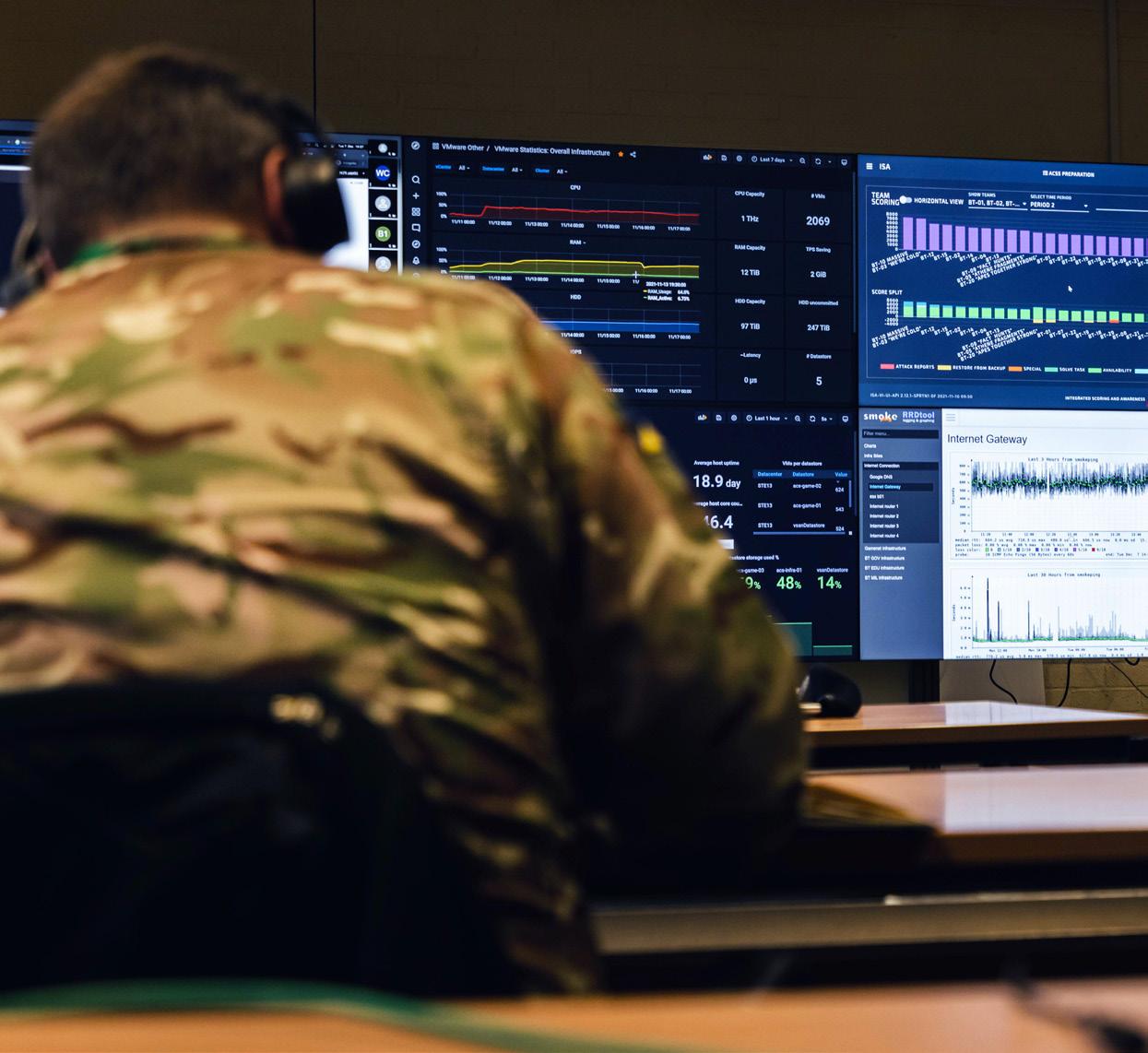
As the UK’s largest software company focused on the public sector, our software solutions and digital consultancy support help make information transfer efficient and critical decisions easier.
Find out more
A trusted partner across the MOD, Civica has helped Army HQ implement data governance, quality, architecture and digital upskilling.
Over the past 12 months, Civica has implemented production of the Army Command Standing Order (ACSO) 18/08 for Data Governance & Coherence Directive. This drew heavily on Civica’s understanding of the MOD’s Data Strategy produced within Defence Digital, and its subsequent implementation and policing across the Deliver Teams. By operationalising and standardising this ACSO, Civica and Army HQ can deliver a central and cohesive data governance framework across the Army’s Directorates, plus deliver an associated, extensive digital upskilling programme.

David Duggan is Civica’s MOD Senior Account Director. With over 30 years of proven MOD expertise, Civica supports the MOD with end-to-end digital transformation expertise and Data Management Association (DAMA) ties.
“Since 2019, we’ve supported Defence Digital across a multitude of their digital transformation programme activities, but specifically supporting data governance, delivering data management training, the
production of JSP 441 and more recently delivering in the development of the defence, digital data analytics platform, which has been a major success,” said Duggan.

The commitment to an “enduring data pandefence capability,” according to Director Chief Data Officer MOD, Caroline Bellamy, requires partners like Civica to effectively deliver the data mandate.
Mark Humphries is the Consultancy Director at Civica and Chairman of DAMA UK , the leading professional membership body for data management professionals in the UK. Humphries adds:
“The Army is implementing ACSO 18/08 to establish effective data governance and data management across all directorates and capabilities. They need to do this so that when they are making evidence-based decisions in the future they are confident that the data they are using is reliable, fit for purpose, timely and readily available; in short they need to know they can trust the data that they are using.”
Learn more
“When we last met, we needed to wire up the estate in the UK and provide pervasive internet access across the whole of the Army estate while we're on it” – a vast, challenging undertaking – “We delivered the passive element of internet access to every building within the army estate. BT, who were our partner in terms of delivering that infrastructure, wired up those 40 sites and they're going live as we speak.”
Turning rhetoric into reality is the aim of phase two, which means literally putting “useful things in the hands of soldiers”. Simple as that, right? Well, not quite, no. With such a large estate to cover and tens of thousands of soldiers, delivery is much easier said than done. In fact, Crossfield estimates that this phase could last up to two years.

“We're now working on phase two, which is a much bigger challenge. The next phase consists of about £70mn worth of infrastructure – about one hundred regular sites, a hundred reserve sites, and a whole load of publicly-financed initiative sites. PFIs are privately-financed initiatives, which will be more complicated because we don't necessarily own that bit of the estate, it's in a PFI,” he says.

“Phase two, again, will begin to deliver this year, though. We'll be putting the hardwire infrastructure in the passive infrastructure and turning it on in this financial year. Users are now increasingly connected, but that also means that that bit of the estate is connected as well. This will enable us to start exploiting technologies like the Internet of Things (IoT); we can start moving data around in a better way; we can start collecting data that we couldn't collect from that environment.”


“We delivered the passive element of internet access to every building within the army estate. BT, who were our partner in terms of delivering that infrastructure, wired up those 40 sites and they're going live as we speak”
ARMY
In terms of digital transformation, Crossfield feels that the Field Army has already travelled a long way down that evolutionary road, “delivering at pace every single two weeks” and dropping software into a whole suite of applications effectively.
“Effectively, we are slowly but surely building a digital picture of the Army's readiness across multiple different fronts,” explains Crossfield. “Readiness for us is across equipment, people sustainment, and soldiers’ readiness in terms of how collectively trained they are.
“We now have a view of all those angles and we're bringing them into a single dashboard with an analytics platform sat above it, which will begin to give us those insights about where we need to target activity, whether we could or couldn’t deliver against a particular ask or challenge that's placed on us.”
But how is the Army able to access the information regarding soldiers’ training in a simple yet effective way?

“We've rolled out a whole new suite of My Series applications in the home command environment; individual ‘My Series’ applications for soldiers to do their administration training have doubled in size.
“In the Army Personnel Centre, the career management portal – which was in its infancy when we last spoke – is now the de facto way of conducting career management activity, both for the individual and their career manager (the individual who's the leader of that person and the wider chain of command). The functionality within that portal has meant that endless trips to Glasgow on the Red Eye are fewer and fewer; we're running promotion boards and assignment boards completely virtually, all through that platform.”
The entire career management process can therefore be completed individually, without the need for a Teams’ event. Instead, “the platform runs it and soldiers can then interact with the platform” via scoring, commenting,
“Effectively, we are slowly but surely building a digital picture of the Army's readiness across multiple different fronts”

“The challenge that Bruhati is helping us with is architecting so that we can have commonality across the entirety of what we do. We’ve been using the Alpha platform for a while, and we have some really good documentation in places like the Army hosting environment, but the two have never really come together. So we’ve asked Bruhati, and they've begun to deliver some really good outcomes here to convert what we know about the Army hosting environment into an architectural product, which will allow us to monitor and maintain the Army hosting environment in a more coherent way,” says Crossfield.
“Working with Bruhati is good fun. They're reactive; we've been to them a couple of times now at very limited notice, with fleeting opportunities to use money, for example, at the end of the financial year – classic government department challenge – and Bruhati delivered every single time. So I rate them from that perspective, because that's not always easy to achieve with a commercial partner.
“The product is very good. They're also very good at speaking in crystalclear English, if you will, about something that's impregnable. With Bruhati, we've got real experts delivering high-quality architecture in our platform, which we value, but then also explaining to us in plain English what they've done, what the value of that is and where we should go next. So it's been a good relationship.”
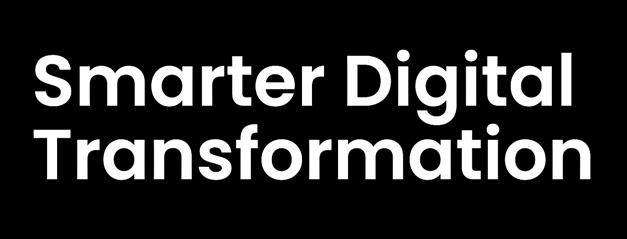
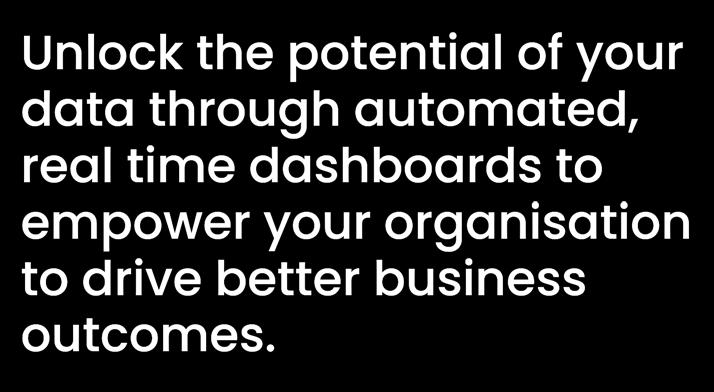


Bruhati is a global consultancy that brings a wealth of digital transformation expertise to implement digital solutions and tools. We use Enterprise Architecture (EA) frameworks and methodologies to help organisations align their business capabilities & processes, applications, technology, and data.

We are assisting the British Army to enhance their EA maturity level by leveraging existing tools, processes and data sets, to create automated real time dashboards. The EA tool provides an architectural lens that dissects data across the organisation to produce a single viewpoint that can drive

immediate strategic and operational benefit. This will enable the British Army to become more agile, provide better data governance, and reduce redundancies in the application and technology portfolios.
“WithBruhati,we’vegotrealexperts
Says Brigadier Stefan Crossfield – Head of Information Exploitation, Chief Data Officer, and Deputy CIO for The British Army
and reviewing the evidence, and then adding their input. All that’s needed for a result is for these to be completed by a certain deadline.
It marks a “fundamental change” for the BA. So, how has the programme been received thus far by partners of the British Army?

“Our community of interest, which sits every third Friday of the month, is probably the jewel in our crown,” says Crossfield. “On these Fridays, we talk to all of our partners
– particularly commercial partners – about what we're doing, why we're doing it, and what our plans are going forward. We also have spotlights on particular partners, where they come and talk to the wider audience about what they're doing for the Army, which has been extremely well received.
“All of the feedback we get is to ‘keep going’. This is unheard of in defence; normally, we're a bit of an opaque box, it's quite hard to

“Our community of interest, which sits every third Friday of the month, is probably the jewel in our crown”
CDO, DEPUTY
ARMY
break in, whereas we want to tell you more.”
Though feedback from partners has been positive, marking Defence’s foray into an era of greater transparency, Crossfield is quick to state that it will be postdelivery phase – after the next 12 to 18 months – that the effects of this approach will likely be felt.


INDUSTRY: DEFENCE LOCATION: UK
Major General Collyer was educated at Ermysted’s Grammar School in North Yorkshire and Welbeck Sixth Form College before commissioning into the Royal Signals. His early service was spent at Regimental Duty in Battlegroup, Brigade, Division, Corps and Joint Force formations and with Other Government Departments. Following Junior and Initial Command and Staff courses, Major General Collyer commanded at Squadron and Regimental level and subsequently Joint Forces Cyber Group and 1st (United Kingdom) Signal Brigade. His staff appointments have included the MOD Operations Directorate, Defence Intelligence, Army Headquarters, Headquarters Allied Rapid Reaction Corps and the United States Security Coordinator HQ. In the deployed arena, he has operated in the Balkans, Iraq, Afghanistan and the Occupied Palestinian Territories. He holds a 1st Class Information Systems Engineering Degree with honours and a Masters in Defence Studies from King’s College London. Following an assignment as Head Strategy, Capability and Development in the Army HQ Information Directorate, he was appointed the Army HQ’s Director of Information and Chief Information Officer in October 2021.

Just over a year since his appointment as Chief Information Officer (CIO), we caught up with Major General Collyer to see what’s changed and learn more about the British Army’s digital direction.
What have been your priorities and what have you been looking to achieve?
MGC: In terms of priorities, my fairly unequivocal top three are: number one security and really understanding at a forensic level from a digital perspective – but also physical and personnel – where our strengths are, where our processes are good, or whether they need to be better; number two is about digital coherence and driving us hard into
a data-centric space; cross capability and cross domain digital coherence; and then, finally, my third – which really intersects both of those two points – is about digital transformation.
What do you think has been delivered, particularly in this last year? What are you most proud of so far?
MGC: The first one is about an awakening. When I joined the forces one or two years ago, at the time, we had a big awakening about network-centric warfare, networks enabling capability and all that went with that– an awakening around the potency, utility and the advantage around data and digital. We've

 MAJOR GENERAL JOHN COLLYER: A YEAR IN
MAJOR GENERAL JOHN COLLYER: A YEAR IN
“We
got a really good sort of head of steam there around our leadership and around our people.
The second one is about – and we are not there yet, but we're definitely accelerating –shifting mindsets, and I think there's a cultural thread to this. Are we, as an army, fighting within a joint, combined multi-domain and alliance force defined by the thickness of our armour, our gun line, our platforms and our weapons system? Yes, but the shift in thinking that we're able to really accelerate from now is moving from that platform-centric approach through to network-centricity to data-centricity.


The third point I'd pull out there is about people. We’re more than sure that, within the digital and data competency of all of our
people, there’s not a niche specialist tucked away, but that the situation has pivoted almost overnight, so we need now to upskill our people in all sorts of areas.
How does all that come together?
MGC: So we're working right now to bottle all of that together to really define in the forest of transformation, where there is a lot of woods and trees, what does all that look like? What makes us better? How does all that come together? So we're just writing that at the moment to really set our level of ambition, which we look to share with partners in industry, academia, allies, and other agencies and defence.
When it comes to the cloud and its new role in businesses, the word frequently used to describe the transition is ‘migration’, suggesting a monumental shift of data information, services, and capabilities from one place into the cloud. For the British Army’s use of the cloud, though, Crossfield prefers different terminology.
“As we've begun to deliver, we've realised that we're not migrating, we're adopting cloud, because we won't move everything. And by moving some stuff, we mean that we might be able to exploit our on-prem facilities in a different way. So we haven’t thrown the baby out with the bath water is, I suppose, the best way to put it. Cloud adoption for us is a joint server farm.”
As such, this joint server farm has multiclouds for the Army to utilise. But how does this impact overall security?
“It's all artificial sensitive. And we learned some good lessons, the biggest of which was the support that we had to provide to the user, the owner, and the application leads because they own it. We're not delivering mono-cloud for them; they own their bit of mono-cloud that's hosting their service, and that's a cultural change, right? To me, that’s the biggest opportunity of the cloud: to culturally change people to become more aware of the importance of being digitally capable, able to manage their own service’s applications, their own hosting computer store.”
Crossfield continues: “So that's gone. We learnt the lessons. We've got a partner at the moment who's helping us design our plan to adopt cloud more broadly for the remainder of what we've got in the Army's on-prem environment.”


“We're not migrating, we're adopting cloud, because we won't move everything”
BRIG. STEFAN CROSSFIELD HEAD OF INFORMATION EXPLOITATION, CDO, DEPUTY CIO, THE BRITISH ARMYBRIG. STEFAN CROSSFIELD HEAD OF INFORMATION EXPLOITATION, CDO, DEPUTY CIO, THE BRITISH


“The adoption of cloud is about balancing the risk of going too quickly, causing problems, undermining your ongoing running of the system versus the opportunity of being in the cloud”
ARMY
“That's the army hosting environment and the army data warehouse. One of those is just storing data, while the hosting environment is hosting a lot of applications. It's also got a DevSecOps environment within it as well, which is going to have to move as quickly as we can physically do it without introducing too much risk.”
And risk is the key word here. Adopting the cloud for certain elements of the digital environment at too quick a pace can introduce gaps that create attack vectors, leaving the system prone to attacks and vulnerabilities. This could prove catastrophic for both the BA and the UK’s national security, so ensuring that the environment hosts the range of applications needed without introducing risk is a tricky balancing act.
“To me, the adoption of cloud is about balancing the risk of going too quickly, causing problems, undermining your ongoing running of the system versus the opportunity of being in the cloud. The security wraps provided by Microsoft and Amazon are world-class – which should help drive quicker opportunities – and they're not going to let that drop; we should therefore trust it implicitly at the moment.
“We provide a lot of that security via young men and women who are wearing green suits while sitting in a room 24/7, when we’d really rather have them out in the field to deliver war fighting capability.”
Unlike the many outlandish projections of future armies that are being detailed currently, it’s important to recognise that the integration of the cloud and digital capabilities across the army isn’t
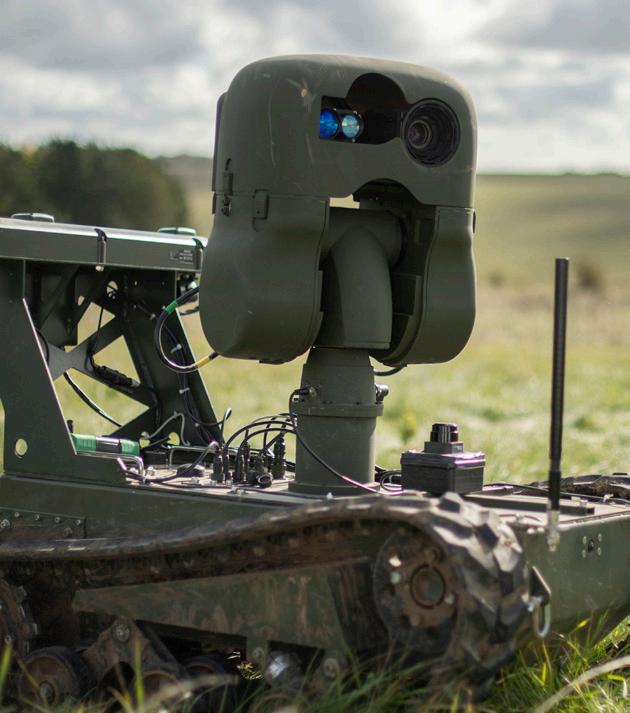
to reduce the volume of human soldiers, but to enhance their skills and capabilities instead. Adopting the cloud, and the world-class security wraps provided alongside, means freeing soldiers up for more active defensive roles.
“Cloud at Secret is a bit of a challenge, and defensives are working their damndest to do that. In terms of AI/ML, for example, coming to life in the secret environment, we need a hyperscale cloud – particularly for some of the stuff we want to do with that. But at the official sensitive level, what I'm really excited about is this idea of the Azure service environment. Safire, our analytics platform, is a brilliant platform that’s sat OnPrem at the moment.
“The potential is huge. And not just in the war fighting space. Futures – the people who deal with designing how we fight in the future – are very engaged in the AI debate. To me, I think we’ll reap more rewards from AI/ML in supporting infrastructure in those other areas.”



“We're now shifting to delivery, pivoting into working more in the battle space, and supporting our ambitions in terms of NATO”
BRIG. STEFAN CROSSFIELD HEAD OF INFORMATION EXPLOITATION, CDO, DEPUTY CIO, THE BRITISH ARMY
Access to the cloud from the battle space will be essential in the future, because the Army will be using the same tools and the same technologies in the battle space that are in the business space – particularly AI.
When Crossfield started imagining the Army’s fully-digitalised future, he noted that there were five to seven critical enablers of a digital transformation for the British Army – including wiring up all estates, statewide internet access for the Army, skills’ training, and a joint server farm – all of which have since been identified and now need to be delivered.


“We've done a bit of the estate, so we're now going after the really big bit: the army hosting environment. We're writing the plan for that as I speak, with the aim of starting to deliver that transition, the adoption of cloud, in that space at the backend of 2022,” he establishes
“Data's the critical enabler for all of the technologies we want to use. I mean, the best example I can give you is collecting data on our platforms so that we can make really good decisions about predictive maintenance. At the moment, that is done with a memory key and is very unreliable as a result, as you can imagine.”
So what next for the British Army’s digitalisation programme, Project THEIA?
Crossfield concludes: “Project THEIA's come a long way. It's done exactly what we wanted to do in the first phase: it's delivered on intent. We understand where we're going; we've very clearly defined the end state. We're now shifting to delivery, pivoting into working more in the battle space, and supporting our ambitions in terms of NATO.
“We're trying to level the playing field and get the backs all lined up so there's no gaps when all advancing as one.”



